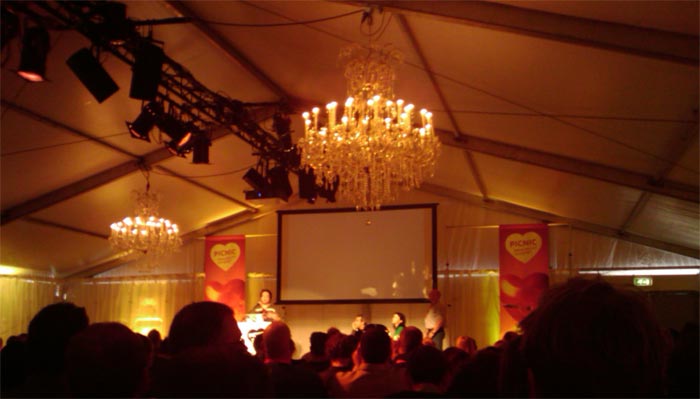Everything you know about transmedia is wrong
Several speakers in this session, Everything We Know about Transmedia is Wrong are sharing their thoughts about on transmedia and what is about. What are the current views on transmedia and is it still a dominant tool in for example marketing and social events nowadays.
The AI game, which came out in 2001, resulted in an enormous success created a lot of confusion concerning the term ‘transmedia’. Right now we’re doing wrong on this, transmedia games (movie marketing) and the way they are spread through multimedia campaigns are all moving in the same direction. Our audience is not stupid and discover what has been made up by companies to make money on them.

There are different stories that we can tell, stories that entertain without the usual puzzles. Bad storyteling is just bad storeytelling. Do we use, for example, the internet in the right way? Just being excited about using a new medium in your project does not make the audience enthousiastic as well.
Tommy Pallotta experimented with interactivity and transmedia through animated movies connected with (online) video games like ‘A Scanner Darkly’. Different platforms were used to publish content and he focussed more on the content itself in order to make it a success. And it became a succes:
Anita Ondine shares about challenging the one core concept that transmedia has to be about entertainment. You can use it to make change happen in the ‘real world’. Transmedia contains all possible media and the core is telling a story, or many stories without boundaries or borders. There are lots of different ways to reward audience participation (in user experience), participation namely is the key for a transmedia campaign. For example, a succesful transmedia story invites people to get involved in the result of the story and allow them to have influence over the story line. It allows people to stand up and take action.
How to take transmedia and use it for other goals (instead of basically entertainment) and affect social change by the use of transmedia tools? Key questions that are still relevant concerning every transmedia project (commercial and non-commercial) are:
- What story do I want to tell?
- What is the best way to tell this story?
- Where is your audience?
- Which are the best characters to tell this story through?
- What themes or motifs will help amplify my story?
- What emotional journey will the audience experience?
- What is the path to action for the audience to participate? What is the ‘call to action’ that you give the audience?
- How will the audience’s involvement impact the story’s outcome in the end?
To conclude, transmedia storytelling maybe more diverse (or complicated?) than often suggested and explained. Are we, as (future) transmedia storytellers able to give the tools to our audiences so they get possibilities and satisfaction? It remains quite a challenge:
If you’re trying to create awareness, you’re better off spending the money on hiring a really great PR-agent
Social media is just a small element of transmedia storytelling, it’s about the conversation with your audience. Transmedia storytelling is much bigger than that says Ondine: “It contains conversation, content & the ‘real world’ and many more integrated together”. Maybe it’s time to rethink our conceptions about transmedia and the way it is used right now. How can we stay relevant right now through transmedia and mobilize people to make a change in this world for example in the third world?